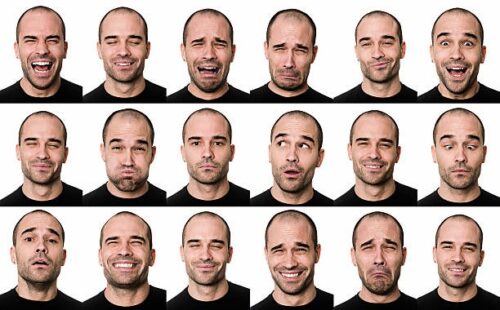Aligning employees with your organization’s objectives and ensuring their contributions will help you get there is the largest problem anyone working in HR and development and learning is facing. Any organization must prioritize selecting the best candidate for a position. However, it goes beyond simply locating individuals with the necessary training and expertise.

Professionals with knowledge and the capacity to transform their work into relevant problem-solving are essential for every creative, forward-thinking, and dynamic organization. Individuals no longer take instructions at face value; instead, they choose what to do and how they want to accomplish their roles, depending on how committed they are to your company’s goals.
It can be a hassle since most organizations across all industries need help to create employees quickly enough to keep up with the staggering increase in customer and cooperation demand. Even though you think your business company is having enough, you may still experience that you need to get a return on your investment. The talent gap needs to be filled more quickly. In actuality, the employee gap is worsening.
All companies are searching for strategies that speed up the shift in employee effectiveness and engagement. Data and insights are frequently the missing components when making decisions about how to transform your organization’s culture so that it becomes not just what you want it to be but also considers who you put in the positions to achieve your business success and objectives.
Personality profiling, also called personality tests, can help with this. It can show you how people’s personality affects their approach to their work and how they connect with others in the workplace. It impacts their ability to collaborate, lead, influence, interact, and handle stress. It can also help direct their personal and professional development.
Personality testing can reveal a part of each candidate’s personality traits and an individual’s personality preferences and behavioural styles. Personality assessments like the Myers Briggs type indicator can also help in highlighting existing weaknesses. Let’s Jill, a sample employee. A personality test can help you gain insight and context for Jill’s natural reaction to a certain situation. However, be careful not to rely solely on tests like this.

A Contemporary And Advanced Measure Of Personality
Individuals prefer to be able to quickly recognize similarities and differences between themselves and those around them. People just have very different natural preferences. Through personality profiling, individuals can learn more about their thoughts, feelings, and behaviors, as well as those of those around them. Although knowing that will make them naturally anxious in difficult situations, employees will understand the importance of order and control. Thus, when profiling, you should use caution when assigning individual labels. For instance, being deemed intelligent and creative is lovely yet demeaning if it entails being called “unreasonable.”
Categories for the participants to concentrate on include abilities, pitfalls, disappointments, and difficulties. A framework for a continuing strategy for growth is included after the report to facilitate the employees’ profile advantages. Each of the above components is present in varying degrees in each person, and the consistent pattern shows the overall profile of that person. These consist of assessing their competency, a leadership manual, and a summary of their preferred methods of working in healthy and unhealthy workplaces.
Will
These can include identifying individuals who are resolute, self-assured, and self-sufficient. It denotes the process of making decisions; at a particular point, people will express their opinions in a straightforward, decided, and passionate manner. The other possible outcome is people deferring to one another to obtain recognition and perspectives.
Energy
These can include energetic, gregarious, and engaged employees. It can stand for the process’s inherent friendliness at work. When an organization’s or company’s subfactors show an imbalance toward high Energy (particularly Sociability), it indicates that team members actually like working collaboratively. For individuals who are less friendly and outgoing, it is crucial to take note of this.
Affection
This can include open, real, nice, and generous employees. Higher ratings indicate not just how instantly trustworthy individuals may be of one another but also how responsive they are to the opinions and suggestions of other people. Individuals with lower overall compassion may find it difficult to support one another when needed. They may lose out on the possibility of hearing insightful thoughts and recommendations by concentrating solely on the practical.
Control
This can include employees who are systematic, disciplined, and organized. You can know that high control entails accountability, rigor, and discipline. This could imply that procedures and norms are strictly adhered to in big organizations or companies, which is beneficial in some situations but undesirable in others. Occasionally, things alter between collaborating in a controlled setting and using a more adaptable, open-ended strategy.
Emotionality includes employees who can influence confidence, have emotional regulation, and have stress tolerance in the workplace. You can gauge the potential level of vitality and attentiveness in the collective team by looking at the general emotionality levels within the group of employees. It will also show how much anxiety and tension everyone in the room feels collectively and what effect this will likely have on your company’s productivity. Low Emotionality groups could be too detached and unaffected to see this in others.

Hiring for Skill Set
Personality profiling is more than a list of items to be checked when grouping employees. A completely engaged, effective, and contented worker is essential to the long-term achievement of your company. Recognizing the different characteristics in each person’s job preferences, personality traits, and behavioral patterns allows you to foster an environment where these people may flourish.
Unfortunately, personality tests are frequently abused, which, at best, has little real benefit and, at worst, exposes flaws in both individuals and groups. Regardless of the purpose —hiring new team members, selecting people for growth and development, or promoting someone—this is a common occurrence you need to deal with in your company.
Putting A Label On People
The difficulty lies in the fact that individuals naturally seek connections with others who share their beliefs. Engaging with other people can be beneficial, but it can also result in rejecting individuals who hold different opinions. Avoiding classifications is an initial step to guarantee that personality profiling doesn’t cause a void or conflict between individuals with quite diverse natural inclinations.
Business success relies on leveraging people’s personality, leadership styles, communication style, emotional intelligence, cultural values, and natural preferences. A personality test can help you gain some insight on this, but remember that people are so much more. Putting people in boxes of personalities will not be helpful.
It’s important to invest in leadership development, personal relationships, communication styles, and team building. This way, employees can grow, and it can help team members’ personalities align and develop.
Confining People By Their Personality
These are regular problems, and it’s crucial that you avoid seeing employees solely by the parameters of their personality profile when it involves managing them. It can show you their natural tendency when it comes to certain situations, but it can be surface-level. Individuals should have the opportunity to be perceived for their actions and demeanor in the workplace rather than being limited by the information on their profile. Additionally, people must be given the chance to venture outside of their comfort zones and succeed in novel endeavors. It also enables the placement of individuals in circumstances that will foster personal development, inspire others, and connect with fundamentally different people.
Selecting And Integrating New Talent
Some of the main factors that affect an individual’s performance include their traits, opinions, and behavioral habits. Naturally, behavior and performance at work are influenced by factors other than personality. However, gaining a deeper grasp of a candidate’s personality qualities is the first step in the process. It guides the conversation throughout the interview process, giving you a better understanding of their nature, capabilities, and vulnerability and an opportunity to look into their adaptability.
Managing Talent Within The Business
You can create individualized approaches to engagement and initiatives to nurture talent by using personality profiling to understand how each person is unique. You can start a talk about objectives for personal as well as professional growth by shedding light on a person’s innate interests, talents, strengths, and weaknesses. It also helps you to carry out goal-setting, suggestions, and evaluations more smoothly and in a way that best suits the employee’s preferred communication style.
Understanding Of Personality Traits
It goes beyond simply guiding the appropriate individual through the door. Knowing a new hire’s preferred learning methods, working, and interacting with others will help you incorporate their contributions to the company as effectively as possible and maximize their chances of success. It assists you in assigning them to teams where they will be more inclined to succeed or matching them with a line that will be more likely to support their success. Upon successful onboarding, new hires will be more involved and efficient right away. This is where learning their innate preferences, strengths, and developmental obstacles can be helpful.
Creating High-Performing Teams
Teams can break apart due to ongoing conflicts, and such rifts can spread like divisions throughout the company as a whole. People can learn how to handle conflict and how to be ready for it when it arises by using personality profiling. It enables you to acknowledge that everyone responds to pressure and stress in a unique way. Certain individuals express their frustrations verbally and openly, while others keep their concerns inside and remain silent. Those who are aware of these distinctions are better able to anticipate and comprehend the actions of others.
Final Thoughts
Companies have always needed the best skills to develop exceptional employees, but the need is even greater in today’s competitive business environment. Businesses are under increasing pressure to choose those capable of guiding their companies through this intricate web of change due to developments in technology, the political environment, and the social demography of the labor force. People can examine their talents, career preferences, and basic personalities through personality profiling. It assists them in seeing how others will perceive them, how they will collaborate with others, and what areas they will need to change to fit the needs of the team.


